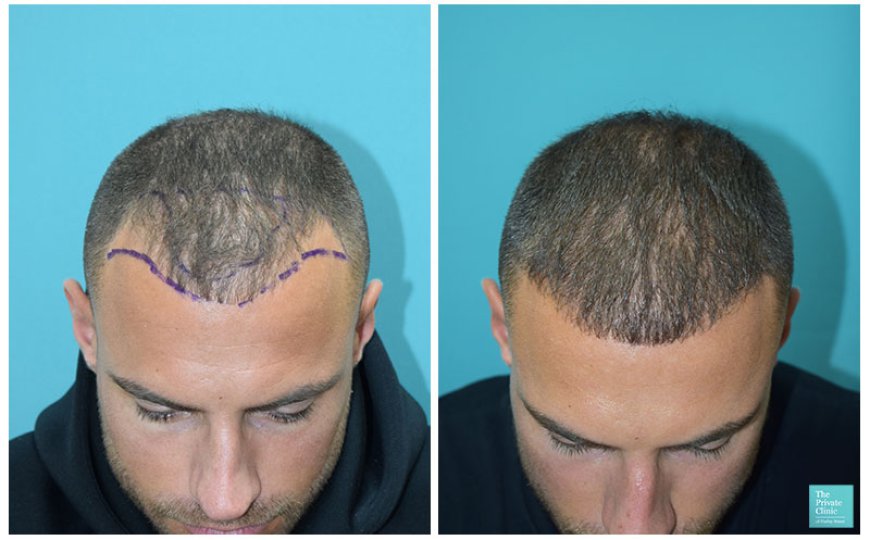Understanding ARTAS Hair Restoration: The Future of Robotic Hair Restoration
22 Plastic Surgery

Hair loss is a common concern that affects millions of individuals worldwide, leading to a significant impact on self-esteem and confidence. Conditions resulting in hair loss can manifest as thinning or complete bald patches on the scalp, primarily affecting areas like the hairline and crown. Fortunately, advancements in medical technology have provided innovative solutions for those struggling with this issue. One such breakthrough is ARTAS hair restoration, a sophisticated method utilizing robotic technology to achieve natural-looking results.
What is Hair Loss and Its Causes?
Hair loss can occur due to various factors, including genetic predisposition, hormonal changes, stress, and medical conditions. The primary types of hair loss include androgenetic alopecia (male or female pattern baldness), alopecia areata, and telogen effluvium. In these conditions, hair follicles in certain areas of the scalp are affected, while those at the back and sides remain genetically programmed for optimal growth.
This characteristic allows for the possibility of hair restoration. In a hair transplant procedure, follicular units are harvested from areas of the scalp that are resistant to hair loss and relocated to thinning or bald regions. This transplantation technique aims to restore a fuller and more youthful appearance.
The ARTAS Robotic Hair Restoration System
The ARTAS robotic hair restoration system represents a significant advancement in hair transplant procedures. Unlike traditional methods that require invasive techniques and long incisions, ARTAS utilizes cutting-edge image-guided robotics and Artificial Intelligence (AI) to enhance precision and patient outcomes.
How ARTAS Works
The ARTAS system employs a sophisticated process to ensure optimal hair restoration:
-
Consultation and Planning: Before the procedure, patients undergo a detailed consultation, where their specific hair loss patterns and goals are assessed. This helps in formulating a tailored treatment plan.
-
Image-Guided Follicle Selection: During the procedure, the ARTAS device scans the scalp and utilizes advanced imaging technology to identify the best hair follicles for extraction. The system evaluates the characteristics of the hair, including density, direction, and texture, ensuring that only the most viable follicles are chosen for transplantation.
-
Robotic Follicle Extraction: Once the optimal follicles are selected, the ARTAS system performs a minimally invasive extraction. This process is conducted with remarkable accuracy, resulting in minimal discomfort and no linear scarring. The robotic arm of the ARTAS device precisely extracts the follicular units, allowing for a faster and more efficient procedure.
-
Transplantation: After the extraction, the harvested follicles are carefully implanted into the designated areas of the scalp using the ARTAS system. The robotic assistance ensures that the grafts are placed at the correct angles and densities, creating a natural appearance that seamlessly integrates with existing hair.
Benefits of ARTAS Hair Restoration
The ARTAS robotic hair restoration system offers numerous advantages compared to traditional hair transplant methods:
-
Minimally Invasive: The procedure does not require any incisions or stitches, leading to quicker recovery times and less discomfort.
-
Natural Results: The precision of robotic technology allows for a more aesthetically pleasing outcome, with hair grafts placed in a way that mimics natural hair growth patterns.
-
Reduced Downtime: Most patients can return to their normal activities shortly after the procedure, as the minimally invasive nature results in less trauma to the scalp.
-
No Linear Scarring: Unlike traditional methods that may leave a noticeable scar at the donor site, ARTAS leaves no visible scars, making it an ideal option for those who prefer short hairstyles.
What to Expect After the Procedure
Following the ARTAS hair restoration procedure, patients can expect some swelling and redness in the treated areas, which typically subsides within a few days. The transplanted hair will fall out within a few weeks, but this is a normal part of the hair growth cycle. New hair growth typically begins around three to six months after the procedure, with full results visible within a year.
Conclusion
In summary, ARTAS hair restoration represents a revolutionary approach to combating hair loss, utilizing advanced robotic technology to provide precise, minimally invasive hair transplant solutions. With its ability to produce natural-looking results and minimal recovery time, ARTAS has become a preferred choice for individuals seeking effective hair restoration options.
If you're considering options for hair restoration and want to explore the benefits of robotic technology, look no further than 22 Plastic Surgery. Their expertise in ARTAS hair restoration can guide you toward achieving the hairline you've always desired.

 AntoneMontoya
AntoneMontoya